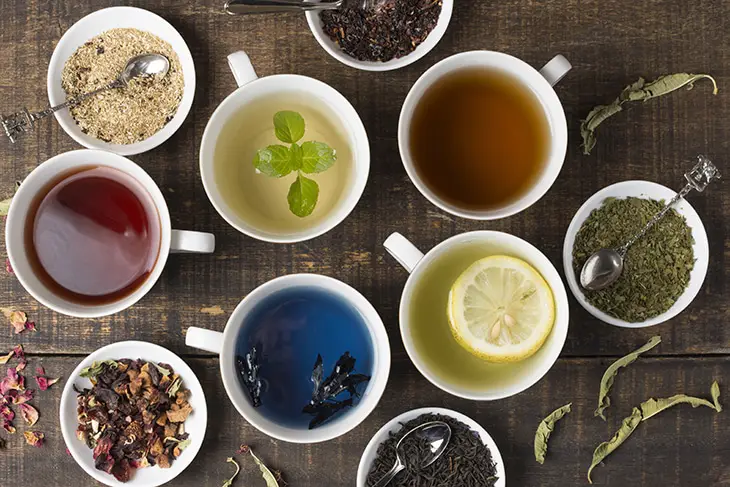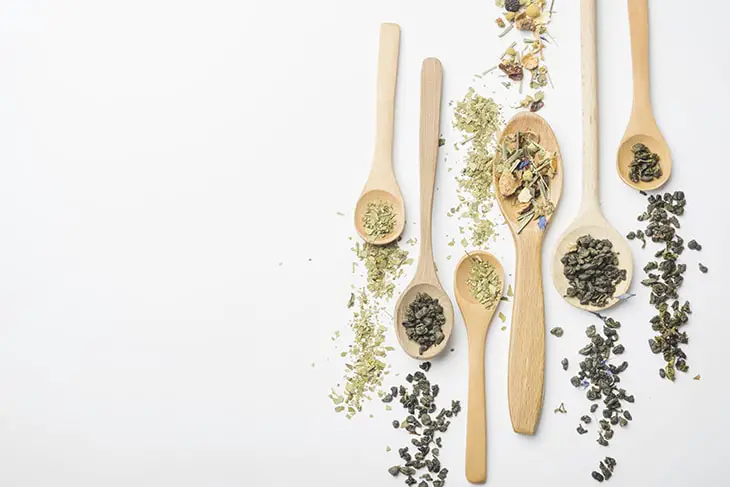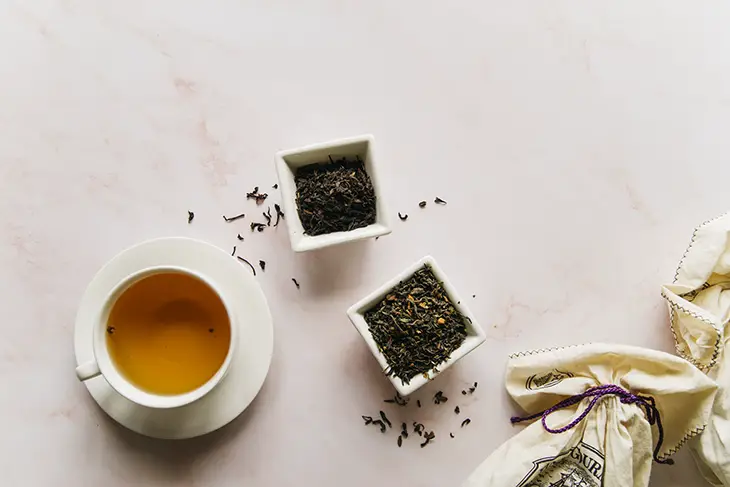
Tea is the most widely consumed drink, next to water. However, you will often discover that the brewing methods vary from person to person. This has stemmed from the fact that few people were actually taught how to steep the perfect cup of tea.
Well, there is an art to steeping tea. It is one that has been perfected over the centuries and really, should be common knowledge by now. So, if you would like to learn about the intricacies of preparing tea, your journey begins here.
Contents
Do you use the word “steep” or “brew” when making a cup of tea? These words are used rather interchangeably, depending on who you talk to. Thus, most people imagine they mean the same thing. This isn’t the case, necessarily.
Understand, brewing is the word used to describe the overall process of making tea. Steeping is an integral part of this process. It is where the tea leaves are immersed in boiled water and kept until they release their flavor.
Therefore, if you want to brew tea perfectly, then you need to have a proper understanding of how to steep tea.
Related Article
It’s Bubbling to the Surface: The Lowdown on Boiling Tea Leaves
Before moving on, it is important to know what is steeping tea, exactly. This will make it easier to understand the process. In turn, you will be able to see why there are so many different factors to consider when making the perfect cup of tea.
When water is first added to tea leaves or vice versa, the leaves absorb some of the liquid. This is what sets the steeping process in motion. What then begins to happen is that the water absorbs the various compounds in the leaves, creating the brew.
This continues due to a mechanism known as diffusion. Essentially the compounds in the tea move from an area of higher concentration (the leaves) to an area of lower concentration (water). The movement will carry on until equilibrium is released or when the leaves and water are separated.
One of the main reasons to learn how to steep tea perfectly is to get the right taste. Keeping tea leaves in water for an ideal amount of time results in a more robust, bitter-free flavor. This is especially important with teas drunk without milk or sugar.
Nonetheless, this isn’t the only incentive for identifying proper tea steep times and methods. The right technique also ensures that you are able to get the greatest health benefits from tea. This is because the nutrients in tea aren’t released into the water right away.
Rather, they are secreted at different rates. Once again, though, you need to make certain that you are balancing nutrients with the taste. Steeping tea for a longer period of time will result in a more nutritious brew – unfortunately, it will also be too bitter to enjoy.
There is no denying that steeping times – and even methods, to a certain degree – differ based on the type of tea you are using. As you may be aware, these are the main types of “true teas” to select from:

Since many true teas often come from the same plant, you may be wondering just why this is. Well, the exact steeping time will depend on the harvesting period and processing level of the leaves.
For instance, leaves that have had a shorter harvest and processing time will release flavor and nutrients a lot more easily. As such, they will not need to be steeped for as long. On the other hand, if the leaves are more mature and have undergone a lot more processing, their ingredients will take longer to diffuse.
While the concept of steeping doesn’t change across cultures or tea types, the method of steeping does. Below, are the different ways that you can choose to steep your tea:
This is one of the more common methods of tea steeping. Here, the leaves are put in a container and placed in hot water. The water then moves into the container, causing color and flavor to diffuse outwards. This process continues until the container is lifted from the cup or teapot.
With this method, you simply place a certain amount of loose leaves in a teapot. Then, you pour an appropriate amount of water into the vessel and allow the tea leaves to steep for a particular amount of time. This results in a stronger brew.
Now, let’s take a look at the implements you can use to steep your tea:
Related Article
Taking the Plunge: A Guide to Finding the Best Tea Steeper
There are several types of tea infusers to select from. These include tea balls, tea mug strainers, and tea sticks. Tea balls are spheres composed of stainless steel mesh into which tea leaves are placed. Tea mug strainers, on the other hand, are larger and look like baskets. The leaves are allowed to float loosely in this basket. Finally, there are tea sticks. Also made of stainless steel, they are thin and straw-like and are often used for on-the-go cups of tea.
Western teapots are traditionally made from ceramic. They are also quite large and can be used to make several cups of tea at once. While most teapots don’t have strainers, some do. These can either be found attached to the lid in a basket-like style. Others have small strainers in the spout.
These are used in both Chinese and Western cultures. They aren’t suitable for all types of tea leaves, nonetheless. As the glass doesn’t insulate the water well, the temperature can drop rather quickly. This does make glass teapots perfect for more delicate teas that need to be steeped in warm but not hot water.
These teapots are used in the Gong Fu tea making ceremony. They are made from Yixing clay. The pots are quite small and although they fill multiple cups, these can often be drunk in a single sip.
The clay has the ability to absorbs tea oils every time the teapot is used. Due to this, the resulting brew actually tastes better with time. However, because of this characteristic, it is important to steep just one type of tea in each of these teapots.
Gaiwan cups are also used for the Gong Fu method. In this case, however, the teapots are made from ceramic, but they are still quite small. The appearance of the tea can be better appreciated with these cups. Since they don’t absorb the flavor of the tea, you can also use them with different types of leaves.
Related Article
How to Use a Teapot: There's More to It Than You Think
As you can imagine, the amount of tea leaves that you use in relation to the water added can have a significant impact on steeping time and the end result. Thus, you need to be incredibly careful about these measurements. Unfortunately, different sources often quote varying amounts, making it difficult to determine which advice to follow.

Most tea drinkers follow the standard “one teaspoon per cup” rule that many have been taught. However, this guideline is too vague and isn’t suitable for most types of tea leaves. So, let’s break down why this instruction doesn’t work and what you should rely on instead.
Now, the reason that one teaspoon became standard is due to experts agreeing that 2 grams of loose tea leaves is the ideal amount. If you were to weigh most traditional black tea leaves, then you would discover that a teaspoon of these leaves does, in fact, correspond to two grams.
On the other hand, if you were to measure out a teaspoon of white tea leaves, you would find that the weight is a great deal less. This, of course, is because certain brands of white tea are lighter than black tea types. Thus, if you tried to make white tea with just a teaspoon of leaves, there would be barely any taste at all.
This is why you should always weigh out new tea leaves before steeping them. Determine how much 2 grams is equivalent to in terms of teaspoons. This is the number of teaspoons that you can use to brew one cup.
Let’s now take a look at why you can’t follow the conventional wisdom of one cup either. Household cups can vary quite a bit in capacity. Depending on the teacup you use, you may find that it can hold between 6 to 12 ounces. Naturally, 2 grams of tea leaves will not be suitable for each of these cups, when filled nearly to the brim.
So, rather than simply measuring water by your cup, it is more accurate to measure the liquid in ounces. This way, you can determine just how many grams (and teaspoons) of loose tea you need to add to get the perfect brew. To do this, follow the guideline:For every 2 grams of tea, add 6 to 8 ounces (177 ml to 236 ml) of water for the best results.
As mentioned, Gong Fu mainly differs in the quantities of tea leaves and water used during the process. Essentially, this form of tea steeping uses more tea leaves and less water than the western method. Thus, you will need to use a different set of rules here.
If you are using a Yixing teapot, then add enough loose tea leaves to cover the bottom of the pot fully. Depending on the size of the pot you are using, this could between one to five tablespoons. For a more accurate measure, consider using a Chinese Tea Scoop. One of these is more or less equivalent to a tablespoon
In case you are using a Gaiwan, for every 3 ounces of water, use the following amounts:
There are a number of factors that can impact steeping. The water quality, water temperature, and even the surface area of the tea leaves can determine what your cup of tea will taste like. Here is a more in-depth explanation of them:
The water quality does have an impact on steeping. A municipal water supply may release water that has a high concentration of minerals and contains chlorine. These elements change how the tea compounds are released into the water during the steeping process.
Thus, if you are using tap water, make sure to pass it through a carbon filtration system first. This will get rid of all of the unnecessary minerals and some of the chlorine as well. Boiling the water should do the rest. Of course, for the best steeping process, you should use bottled spring water.
As mentioned in an earlier section, tea types differ according to the processing practice. Thus, depending on the exact methodology, teas can be considered either more ‘delicate’ or ‘robust’. This is why you need to be careful about the water temperature when steeping each of these teas.
As a rule of thumb, you need cooler water for less oxidized teas – green and white – and warmer water for more oxidized teas – black, Oolong and Pu’erh.
For a more reliable guide, check out the most appropriate temperatures for each tea type:
In layman’s terms, for white tea, you should turn off the heat when the small bubbles begin to show. For green tea, take the water off just a few minutes afterward. For black and Oolong teas, wait until the water is just at a full boil. For Pu’erh, the water should be boiling when you turn the heat off.
Finally, it is important to consider the tea leaves' surface area as well. If you are using tea leaves with a finer consistency, you can expect them to impart flavor and color a lot more quickly. On the other hand, if the tea leaves are larger and unbroken, they will need a greater steeping time for the same type of brew.
Since tea bags are one of the most common methods used to make tea, most people want to know how long should a tea bag steep for. While the exact time depends on the type of tea, on average tea bags need to be steeped for a lesser amount of time than loose tea leaves.
Tea leaves in tea bags are cut smaller. So, going by the information mentioned above, you can deduce that they release flavor and color much faster. Thus, they don’t need to be kept in the water for as long. So, here are the most appropriate steeping times for tea bags:
Related Article
The Truth About Steeping: How Many Times Can You Use a Tea Bag?
It is important to remember that the quality of the tea in tea bags can differ from one manufacturer to another. Thus, following the steeping times provided by the company may be helpful in certain instances. You can reduce or increase the steeping time depending on the resulting brew.
It has been established that steeping loose leaf tea, especially unbroken types, will require a little more steeping. Here is the schedule to follow to know how long to steep tea:
Related Article
Once More Unto the Steep, Dear Friends: Your Guide to Reusing Loose Leaf Tea

Herbal teas, as you are aware, aren’t “true teas”. So, while there may be some similarities with the steeping process, it is important to know the particulars surrounding these types of teas. This will ensure that you end up with a more pleasant tasting brew.
The thing to keep in mind here is that herbal tea can be a rather all-encompassing term used for any brew that isn’t considered a true tea. Due to this, you should always follow the specialized instructions included with each type of herbal tea you buy. Nevertheless, there are a few general rules to abide by:
For the most part, herbal teas follow the 2 grams per 6 to 8 ounces guideline as well. You may need to adjust these amounts depending on the kind of herbal tea as well as the robustness of the individual brand.
Most herbal teas steep best in water that is around 203°F and 212°F (95°C and 100°C). Essentially, you should take the water off the stove the second that it begins to boil. If it goes past the point of boiling, allow the water to cool down for a bit.
Steeping times for herbal teas will depend on what type it is and what part of the plant has been used in the tea. These are what the steeping times are most likely to be for each of these types:
Now let’s go over some of the top tea steeping mistakes that can ruin a brew. This way, you will know just which methods to avoid in your own steeping process.
If you are like most people, you probably wait for the whistling of the kettle to know when your water is ready. Unfortunately, this boiling point is often too hot for most teas. Therefore, if you try to steep your tea in this water, it will lose quite a bit of its natural flavor profile. You should either take the water off the stove at the right moment or allow it to cool for a while before pouring it over tea leaves.
If you have waited too long and the water in the kettle is now cold, don’t reheat it. At this point, some of the oxygen in the water has been lost. This, in turn, will create a dull cup of tea. Instead, throw out this water and boil fresh, cool water from the start again.
If you prefer a stronger cup of tea, then you may be tempted to leave the bag or leaves in the water for longer. Unfortunately, this will not result in a more robust brew. Instead, you will be left with a bitter drink. If you do wish for a stronger brew, increase the amount of tea leaves while keeping the volume of water the same. Then, brew it for as long as is recommended.
There are some individuals who feel jiggling the tea bag up and down in the water can help the tea to diffuse faster. While the color may appear to change more quickly when you do this, there isn’t actually much of a difference made. Rather, it is better to leave the tea bag as it is for the duration of the recommended steeping time.
Another common practice is squeezing the tea bag into a cup before discarding the bag. If you are guilty of this habit, you need to do away with it immediately. Understand, when you rinse out the tea bag, you are simply pouring concentrated tannic acid into your cup. Thus, you will be left with a bitterer brew. What you should do instead is to simply lift the tea bag out of the water when it has steeped for an appropriate amount of time.
As you can see, there is quite a bit to learn about how to steep tea. However, if you follow all the information and guidelines mentioned, you will be able to master this technique soon enough. Once you do, you will have no problem at all brewing the perfect cup of tea every time.
